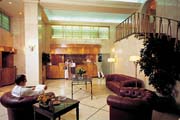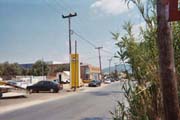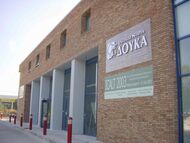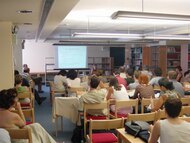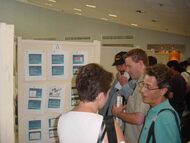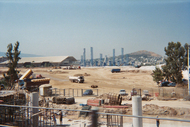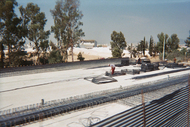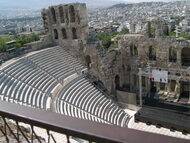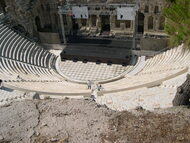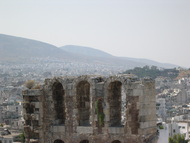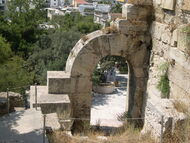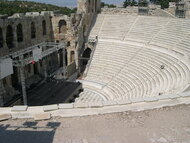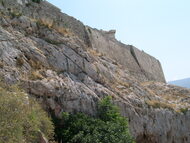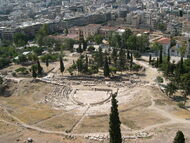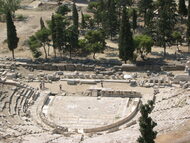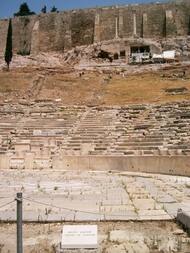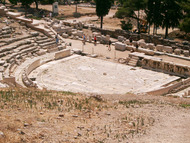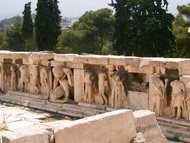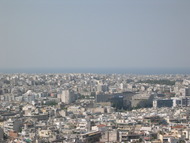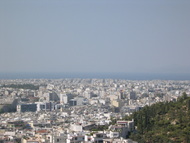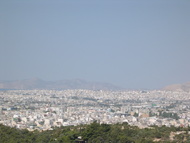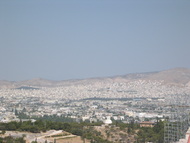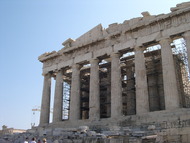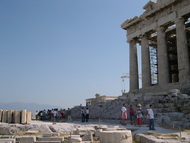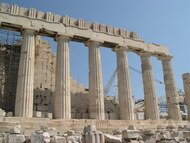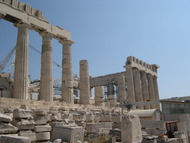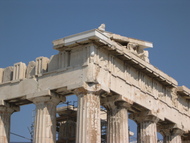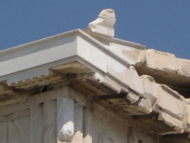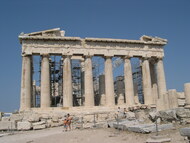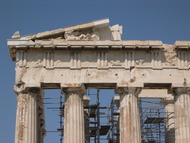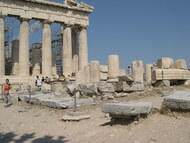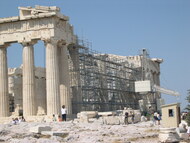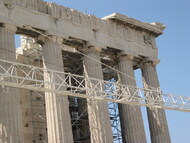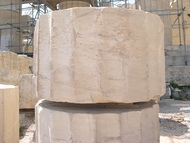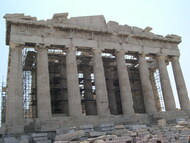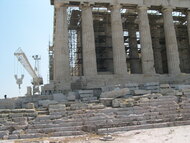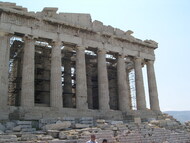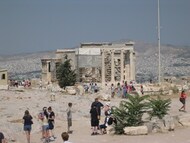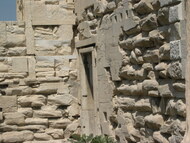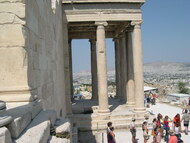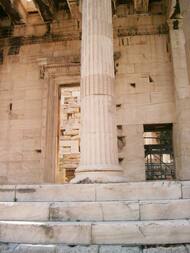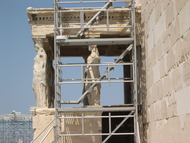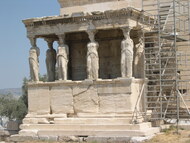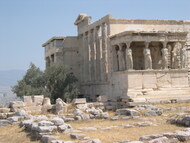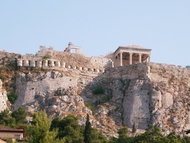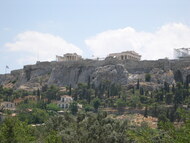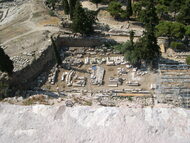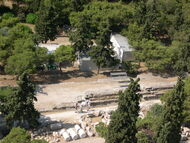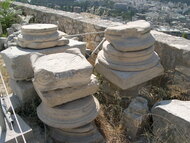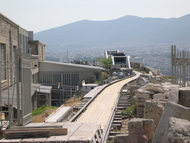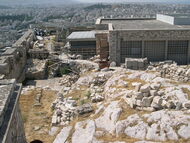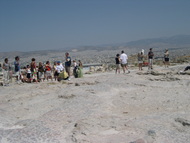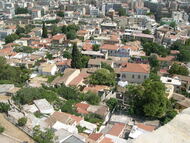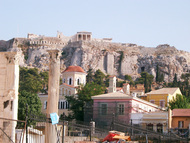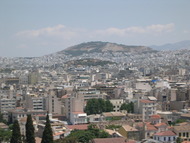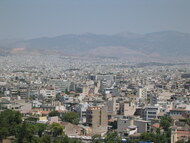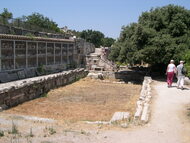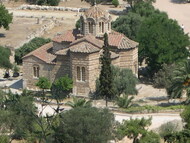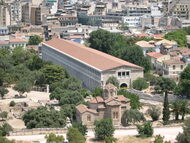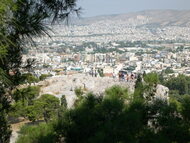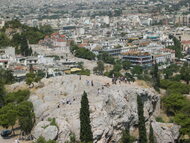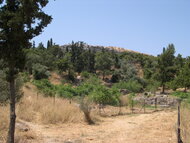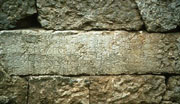| The 3rd IEEE International Conference on Advanced Learning Technologies (ICALT 2003), held in Athens, brought together academics, researchers and industry practitioners who are involved or interested in the design and development of advanced and emerging learning technologies with ultimate aim to empower individuals and organizations in building competencies for exploiting the opportunities of the knowledge society. |
|
The Acropolis, Athens
Saturday July 12th 2003 |
||
 |
 |
|
 |
||
 |
 |
|
|
The Acropolis, Athens
Saturday July 12th 2003 |
||
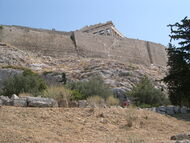 Looking up. |
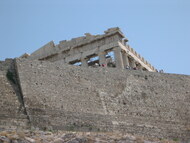 zoom zoom! |
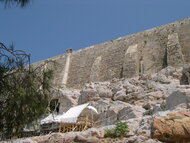 |
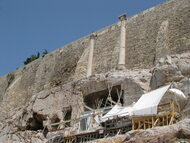 |
 |
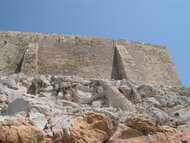 At the SE corner. |
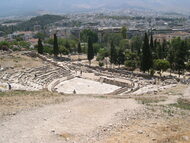 Looking down. |
 zoom zoom again. |
 There was a nice shady spot to take some additional pictures... (It was 92° F today) |
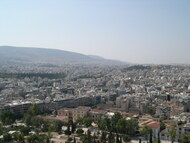 ... like looking SE over Athens... |
 ... and in the distance... The Temple of Olympian Zeus. |
|
|
The Acropolis, Athens
Saturday July 12th 2003 |
||
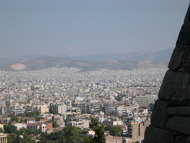 That bit of wall is part of the propulaia ("entrance") to the Acropolis. |
 |
 That's the Thission temple in the lower right. |
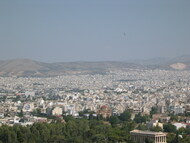 da bird! da bird! |
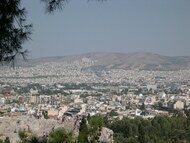 That's the Areopagus ("Mars Hill") down in the lower left. |
 It's where St. Paul made his famous "Men of Athens" speech in 51 AD. |
|
The Acropolis, Athens
The Propulaia |
|||||
 |
 |
||||
 |
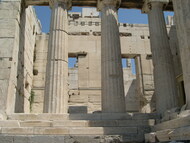 |
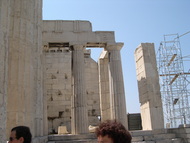 |
|||
|
The Thission temple, Athens
Saturday July 12th 2003 |
||
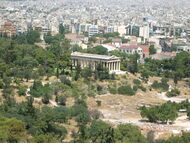 The Thission as seen from "Mars hill". |
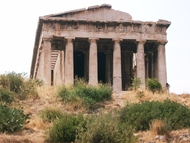 Eveything seems to be on a hill. |
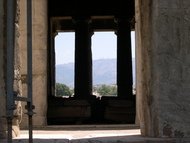 Looking through from back to front. It's dark in there at noon. |
 Looking through from front to back. |
 A better front to back view. |
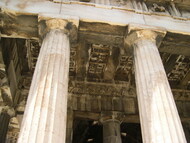 The intact roof and a bit of the frieze. |
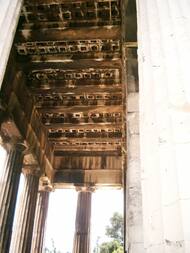 More roof, from the side. |
 Forgot who this quadriplegic dude was. (Emperor Hadrian 117-138 AD) |
|
|
The Temple of Olympian Zeus, Athens Greece
Saturday July 12th, 2003 |
||
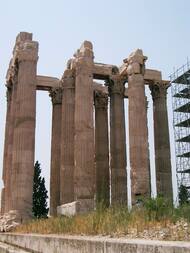 |
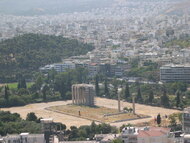 |
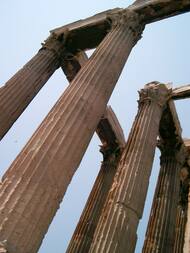 |
|
Reststop, looking towards Livadia
Sunday July 13th 2003 |
||
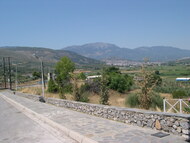 |
 |
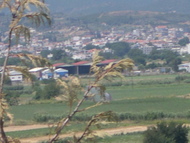 |
|
Amalia Hotel, Delphi
The hype: |
||
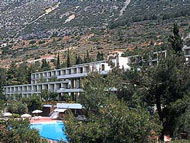 View of the front of the hotel, from the road. |
 Hotel pool, from the deck. |
|
|
Delphi (Del-fee)
Sunday July 13th 2003 |
||
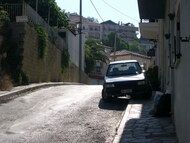 Looking up the first street I traversed in delphi. Notice the typical greek parking space. |
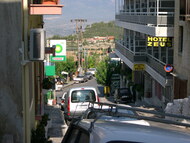 Looking back down. You'd never guess this is the eastbound lane of a major east-west highway. Tour busses passed through here every few minutes. |
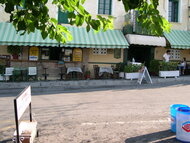 Tavern with the Best! "Pork Gyro Pitas" Did you notice the add for "Toast" in the previous picture? Don't know what the big deal is about toast but it was advertised everywhere. |
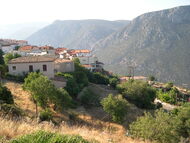 The view from the street leading to the hotel. |
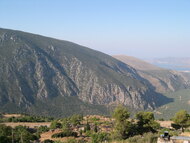 ... and again ... |
 In the distance, at the edge of a plain full of olive groves and vineyards, is the port of Itea. |
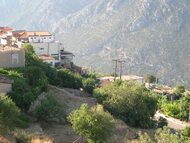 ... this one too. |
 Got this postcard from a nice old guy who ran a t-shirt shop. (need to resample) |
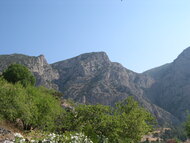 Looking up at the Phaidriades, upon which Delphi sits, from the street near the hotel. |
|
The Sanctuary of Athena Pronaia, Delphi
Monday July 14th 2003 |
||
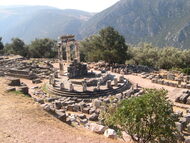 Look closely. You can see the sites entire security force. |
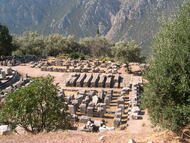 The newer Temple to Athena. Built ca 370 BC to replace the earlier temple, to the east (left), destroyed by falling rocks. |
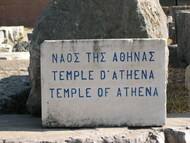 Obviously not original. |
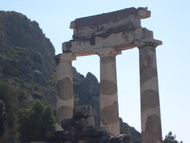 The circular building in Doric order, known as the Tholos, was built ca. 380 B.C. |
 Its function is not exactly known but judging from the multi-coloured stone, the fine workmanship, and the high-standard relief decoration it was an important building. |
 Considered one of the architectural wonders of the world because of its mathamatical precision. It was partly reconstructed in 1938. |
 Looking up at the Phaidriades upon which Delphi sits. |
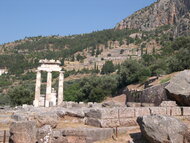 You can see the Temple of Apollo in the background. |
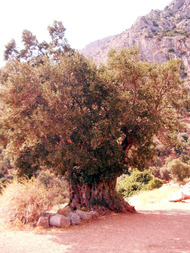 Bush, tree, or just wierd? |
|
The Gymnasium, Delphi
Monday July 14th 2003 |
||
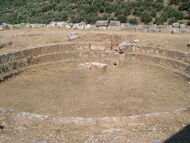 The pool. Too bad it's dry, could've used an icy plunge about then. |
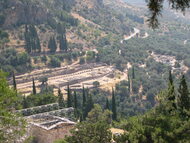 The Gymnasium center, Temple to Apolo forground, and Temple to Athena far right. |
|
|
The Sanctuary of Pythian Apollo, Delphi
Monday July 14th 2003 |
||
 |
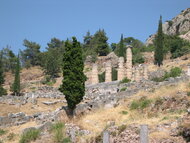 |
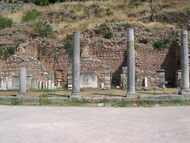 The Stoa of the Athenians. Erected by the Athenians, after 478 B.C., to house the trophies taken in their naval victories over the Persians. |
 |
 |
 |
 |
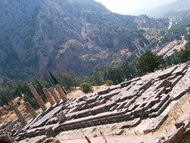 |
 |
|
The Theatre of the Sanctuary, Delphi
Monday July 14th 2003 |
||
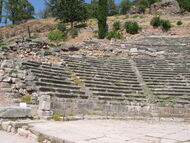 |
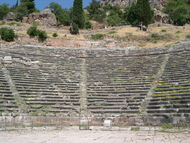 |
 |
 As a somewhat warped panorama. |
||
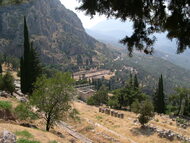 Taking a break under a tree & looking back the way I came. |
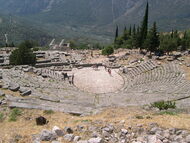 Even if the show bombs, there's still the view. |
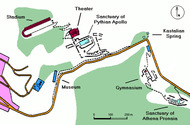 Site Map |
|
The Stadium, Delphi
Monday July 14th 2003 |
||
 Restroom or Concessions? |
 Looking west. Off to the right are the starting gates 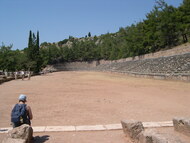 Ready, set, go! 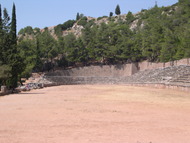 Half way there! The thicker seats, center right, are for officals. |
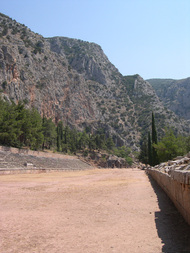 Looking back. |
|
The Archaeological Museum, Delphi
Monday July 14th, 2003 |
|
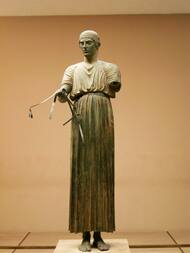 A bronze charioteer from a four horse chariot. (A Quadriga) 478 B.C. |
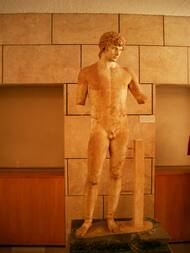 Statue of Antinoos. (An early Teen Idol!) or the gratuitous naked picture just for Bell. |
 Beware of wild kitty. |
 |
Hey! You're visitor number ![]()
![]()
![]()
![]() since 10:49 pm Aug 19, 2003
since 10:49 pm Aug 19, 2003
